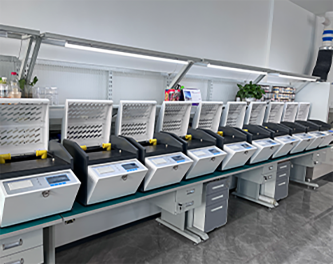 English
English


Testing Smoke Emissions from Oil Burners for Environmental Compliance and Efficiency Evaluation
Understanding Oil Burner Smoke Testers Ensuring Efficient and Clean Combustion
In the world of heating systems, particularly those that utilize oil burners, the importance of maintaining clean and efficient combustion cannot be overstated. A crucial tool in this endeavor is the oil burner smoke tester. This instrument plays a pivotal role in assessing the performance of oil burners, ensuring that they operate effectively while minimizing environmental impact.
What is an Oil Burner Smoke Tester?
An oil burner smoke tester is a device designed to measure the smoke produced by an oil burner during operation. The smoke emitted is an indicator of combustion efficiency. Higher smoke levels typically suggest incomplete combustion, which can result in not only poor heating efficiency but also increased emissions of harmful pollutants. By using a smoke tester, technicians can obtain a quantifiable measure of smoke production, which can then be analyzed to make necessary adjustments.
Why is Monitoring Smoke Important?
Monitoring smoke from oil burners is vital for several reasons
1. Efficiency Excessive smoke indicates that the burner is not operating efficiently. Oil burners that produce less smoke tend to have better combustion processes, leading to higher efficiency and lower fuel costs.
2. Environmental Impact Incomplete combustion can release unburned hydrocarbons and other pollutants into the atmosphere. By ensuring that an oil burner operates cleanly, we can reduce the environmental footprint associated with heating.
3. Equipment Longevity Burners that operate with high levels of smoke production may suffer from soot buildup, which can damage components over time. Regular testing and maintenance can extend the lifespan of the burner and associated systems.
oil burner smoke tester

4. Compliance Many regions have regulations regarding emissions from heating systems. Regular smoke testing can help ensure compliance with local laws, avoiding potential fines and contributing to public health and safety.
How Does the Smoke Testing Process Work?
The smoke testing process generally involves the following steps
1. Preparation The technician sets up the smoke tester, ensuring that it is calibrated correctly for accurate readings. This may involve preparing the burner and ensuring it is in proper working condition.
2. Observation The technician ignites the burner and observes its operation. The smoke tester measures the density of the smoke emitted, typically utilizing a scale that rates smoke levels from 0 (no smoke) to 4 (dense smoke).
3. Analysis Once the smoke readings are taken, the technician analyzes the data to determine the burner's performance. If the smoke level is above the acceptable range, adjustments may be necessary.
4. Adjustment and Retesting Based on the analysis, the technician may adjust air-fuel ratios, clean the burner, or perform other maintenance tasks. The burner is then retested to ensure that improvements have been made.
Conclusion
In conclusion, the oil burner smoke tester is an essential tool for maintaining the efficiency and cleanliness of oil-burning heating systems. By regularly monitoring smoke emissions, technicians can ensure that these systems operate at optimal levels, thereby saving energy, reducing costs, and minimizing environmental impacts. As we move towards more sustainable heating practices, the role of smoke testers will only become more significant, helping to create a cleaner, more efficient future. Whether for residential or commercial applications, investing in the regular use of oil burner smoke testers is a responsible decision for any oil heating system owner.
-
Differences between open cup flash point tester and closed cup flash point testerNewsOct.31,2024
-
The Reliable Load Tap ChangerNewsOct.23,2024
-
The Essential Guide to Hipot TestersNewsOct.23,2024
-
The Digital Insulation TesterNewsOct.23,2024
-
The Best Earth Loop Impedance Tester for SaleNewsOct.23,2024
-
Tan Delta Tester--The Essential Tool for Electrical Insulation TestingNewsOct.23,2024





